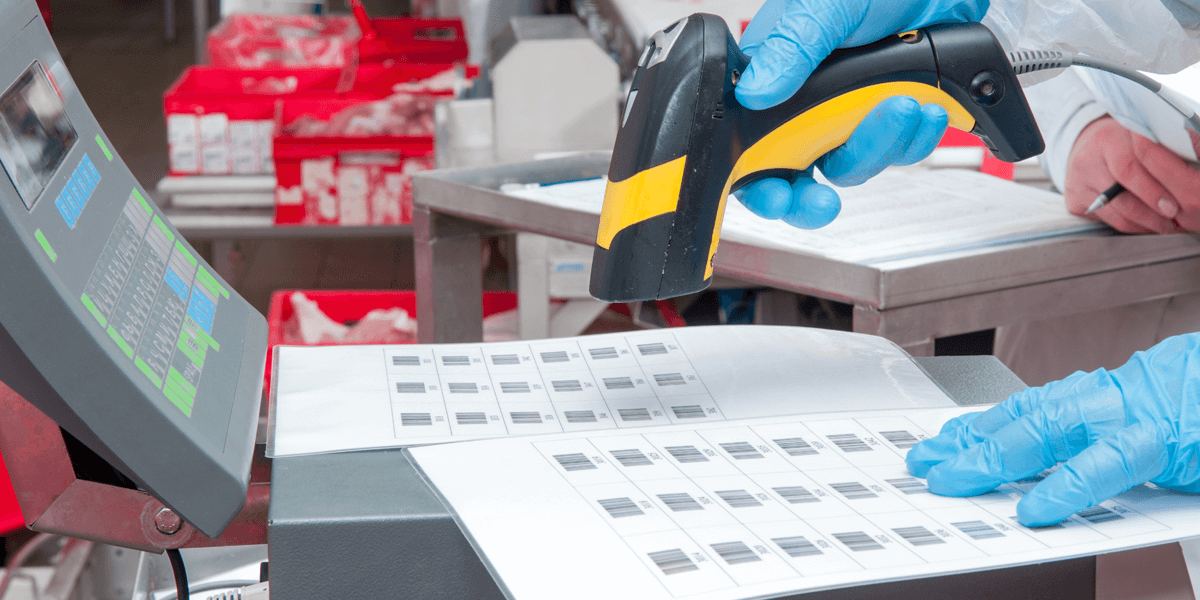
«Interview with Dr. Evangelos Theodorou, President & CEO of Theodorou Group, published in MEATPLACE magazine, as part of the feature 'Traceability: From Plate to Farm'»
Dr. Evangelos Theodorou
President & CEO, Theodorou Group
1. How satisfactory is the current level of traceability technology adoption in the Greek food industry?
There has been clear progress in recent years, but adoption remains at a moderate level. Larger units have invested in traceability/MES systems, ERP/WMS integrations, and GS1 standards. However, the technical integration of all production activities and an end-to-end approach are often lacking.
Theodorou Group bridges this gap with the modern Tracer Factory MES platform, whose main functionalities include:
- Integration with existing IT systems (ERP, WMS, QMS, etc.)
- Execution of warehouse operations: Receiving – Internal Movements – Loading – Inventories
- Production Management: Digitization and scheduling of production orders – Centralized production control
- Coding Management: Integration and control of all printers
- Quality Management: Execution of quality control procedures
- Line Monitoring & OEE: Integration with factory equipment, real-time data collection and display of machine status
- Comprehensive Traceability: Monitoring and tracking of production and packaging processes from raw materials to the final product
2. How feasible is it today to track a product’s full journey from the farm to the consumer’s plate?
From a technical perspective, it is fully feasible. The ability to reliably trace products is a key requirement for the proper functioning and transparency of any supply chain. This traceability must occur:
- At every stage of the production process (internal traceability)
- Across the supply chain until the product reaches the end consumer (chain traceability)
Every stakeholder in the supply chain has a strong interest in traceability:
- Producers need to quickly identify defective products in case of errors.
- Distributors and retailers want to ensure correct product handling.
- Regulatory authorities require transparency and proper supply chain functioning.
- Consumers want assurance that products are authentic and of high quality.
With Tracer Factory, traceability can cover every stage of production and distribution, provided that marking and coding data is recorded in real-time in a unified information environment.
3. Are 2D codes a revolution in the food industry, especially in meat products?
2D codes (QR, DataMatrix) can provide extensive information and are a major advancement over traditional barcodes. In meat products, dynamic labeling is often required based on weight, along with unique serialization per product package.
However, real benefits arise only when 2D coding is integrated into a modern traceability/MES platform. Coding and labeling alone do not guarantee quality or safety — what achieves this is a system of chain traceability that follows the products as they move through the supply chain.
4. What is the role of Serialization & Aggregation systems in the traceability ecosystem for meat products?
Serialization systems assign a unique identification code (typically a 2D code) to each unit of the final product during production.
Aggregation systems group serialized products into hierarchical packaging structures (boxes, pallets), label them, and allow identification of all the unique serialized units inside.
Both systems follow the same architecture and must work together, exchanging data in real-time to support traceability and supply chain transparency. This enables product recalls, efficient warehouse management, and consumer verification.
5. How does traceability practically improve stages like production and logistics, and what are the benefits for the end consumer?
In production: Real-time recording of batches, dates, and raw material quality. In logistics: Monitoring of temperature (freezing/thawing), loading, deliveries, and recalls. At points of sale: Consumers access real-time data on origin, production/expiry dates, and product safety and transparency—boosting trust in the products they buy.
6. What packaging changes are required to support and highlight product traceability?
Integration of a high-quality 2D code printed clearly on the product packaging or label. Use of appropriate printing materials (inks) suitable for the application and resistant to temperature changes. The codes must be legible and contain all legally required information, plus additional data that adds value and builds consumer trust.
7. What are the benefits of a unified real-time tracking system for a food business?
Such a system ensures total product oversight from production to consumption, improves production via analytics, reduces human error through automation, enhances compliance with quality systems, allows faster response to quality issues or recalls, and leads to resource efficiency and waste reduction.
8. How do you expect traceability in the food industry to evolve over the next years?
We anticipate greater use of IoT sensors (temperature, humidity, etc.) across the supply chain, cloud-based platforms with real-time dashboards, predictive analytics, blockchain technology for data security, stricter legislation (e.g., Chestny ZNAK in Russia), consumer demands for full transparency and stronger alignment between traceability and ESG goals, sustainable practices, and green labeling.
9. Are there already successful examples in the Greek market where traceability improved meat product quality, safety, or transparency?
Yes. We've implemented digital traceability solutions in Greece with significant improvements in product quality, safety, and transparency. A notable example is a collaboration with a Greek food company where we applied unique 2D codes and real-time recording at every production and distribution stage. Results included:
- Verified product authenticity and transparency
- Compliance with market requirements (e.g., Russia – Chestny ZNAK)
- Consumer verification through QR scanning
- Better internal organization, reduced errors, and increased trust
This successful case study proves that digital traceability is not just about compliance. It’s a competitive advantage and a driver of food safety and quality.
10. How are traceability solutions combined with sustainability goals, such as reducing food waste, carbon footprint, and aligning with ESG targets?
Traceability and sustainability are now deeply interconnected, especially in the food sector. Our Tracer Factory solutions extend beyond food safety to become tools for environmental and social responsibility, contributing to ESG goals like:
-
Reducing food waste via data-driven decisions
Real-time product lifecycle tracking allows for optimized raw material orders, batch stock management, and FEFO circulation, cutting waste due to expiration or poor storage. -
Measuring and reducing carbon footprint
End-to-end supply chain tracking identifies energy-intensive phases (e.g., cooling, transport), enabling analysis and documentation of environmental impact per product/batch, and targeted actions to reduce CO₂ emissions. -
Alignment with ESG targets and consumer transparency
Consumers now demand verifiably "clean" products—safe, ethical, and sustainable. Traceability allows companies to prove the origin of raw materials from responsible sources, compliance with welfare/labor/environmental standards, and make verifiable claims about "eco-friendly" products.
Traceability is no longer just a compliance requirement. It is a transformation lever through which the food industry can combine productivity with transparency, safety with sustainability, and trust with innovation.
At Theodorou Group, we design our solutions with exactly this philosophy: to offer technology that answers not just “where is the product?” but also “how was it produced, and at what cost to the planet and society”.
 Dr. Evangelos Theodorou is the President & CEO of Theodorou Group. He holds a degree in Electrical and Mechanical Engineering – NTUA (National Technical University of Athens) and holds a Ph.D. in Electronic Systems from the University of Cambridge, England. He has been a lecturer at the Department of Electrical and Mechanical Engineers of the NTUA.
Dr. Evangelos Theodorou is the President & CEO of Theodorou Group. He holds a degree in Electrical and Mechanical Engineering – NTUA (National Technical University of Athens) and holds a Ph.D. in Electronic Systems from the University of Cambridge, England. He has been a lecturer at the Department of Electrical and Mechanical Engineers of the NTUA.
Food / Beverages


